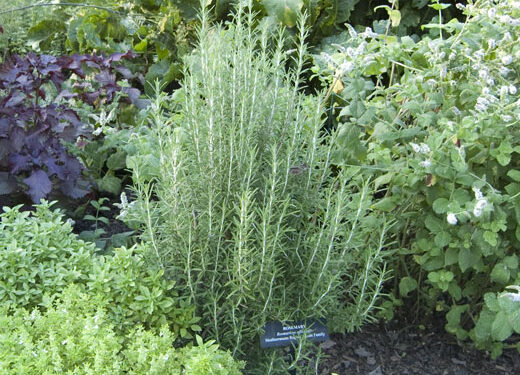Rosemary, with its fragrant needles and culinary versatility, is a beloved addition to many backyards. But despite its resilience, rosemary has a few garden companions it simply doesn’t vibe with. Planting these botanical foes too close can lead to stunted growth, nutrient deficiencies, or even attract harmful pests. So, let’s explore the plants that rosemary prefers to keep at a distance:
The Not-So-Fabulous Foursome:
- Sage: Both rosemary and sage belong to the Lamiaceae family (mint family) and share a preference for similar growing conditions. However, planting them too close together can create unnecessary competition for water, sunlight, and nutrients. This competition can lead to reduced growth and overall health for both plants.
- Rue: This little shrub might be known for its medicinal properties, but it’s not rosemary’s best friend. Rue can stunt the growth of rosemary and potentially inhibit the absorption of essential nutrients.
- Peppers: Rosemary’s allelopathic properties, which means it releases chemicals that can influence the growth of other plants, can have a negative effect on peppers. Planting them in close proximity can lead to stunted pepper growth and a decrease in pepper production.
- Potatoes: While rosemary itself isn’t necessarily harmful to potatoes, it thrives in drier soil conditions, while potatoes prefer consistently moist soil. Planting them together can make it challenging to maintain the ideal moisture level for both plants.
Rosemary’s Roaming Roommates:
Now that you know the foes, let’s talk friends! Here are some plants that share a harmonious relationship with rosemary:
- Beans: Rosemary’s strong scent can help deter bean beetles, a common pest.
- Carrots: The fragrant rosemary can help mask the scent of carrots, making them less attractive to carrot flies.
- Squash: Rosemary can act as a natural mosquito repellent, creating a more pleasant environment for your squash plants to thrive.
Planting for Peace: A Guide to Harmony
- Understand Your Plants: Research the specific needs of each plant you intend to grow together.
- Respecting Space: Provide adequate spacing between plants to avoid overcrowding and competition for resources.
- Observe and Adapt: Pay attention to how your plants interact. If you notice any negative impacts, adjust the planting layout accordingly.
Embrace the Fragrant Garden!
By understanding rosemary’s preferences and potential conflicts, you can create a thriving and fragrant haven in your backyard. With the right companions by its side, your rosemary plant will flourish, gracing your garden with its beauty and culinary delights for years to come. So, plant with care, and watch your rosemary become a vibrant and functional star of your backyard!




